Pu-erh tea, as a traditional health beverage in China, is widely loved for its unique fermentation process and rich nutritional components. In recent years, an increasing number of studies have shown that pu-erh tea has significant effects on lowering blood lipids. This article will explore how pu-erh tea helps regulate blood lipids and provide some drinking recommendations.
Friendly Reminder: The pu-erh tea mentioned below can be narrowly understood as the ripe pu-erh tea sold on this site. The following research focuses more on fermented teas. Pu-erh raw tea is often classified as a compressed form of green tea; however, aged raw tea, after long storage and transformation over time, also exhibits effects similar to fermented teas to some extent.
1. Concept of Blood Lipids:
First, let's understand the concept of high blood lipids. Blood lipids refer to the total amount of cholesterol, triglycerides, and lipids (such as phospholipids) in the plasma. The four main components of blood lipids include:- Total Cholesterol (TC): The sum of cholesterol contained in various lipoproteins in the blood.
- Triglycerides (TG): Mild to moderate elevation in triglycerides increases the risk of coronary heart disease; when severely elevated, it can induce acute pancreatitis.
- High-Density Lipoprotein Cholesterol (HDL-C): Known as the "cleaner of blood vessels," it transports cholesterol from surrounding tissues (including arterial walls) to the liver for metabolism and breakdown, reducing cholesterol deposition on vessel walls and playing a role in anti-atherosclerosis.
- Low-Density Lipoprotein Cholesterol (LDL-C): Referred to as the "villain that damages blood vessels," it is the primary risk factor for the development of atherosclerosis.
Effects of Pu-erh Tea on Lowering Cholesterol
Hyperlipidemia (Abnormal Blood Lipids):

Research on the cholesterol-lowering effects of pu-erh tea.Adverse Effects of High Blood Lipids:
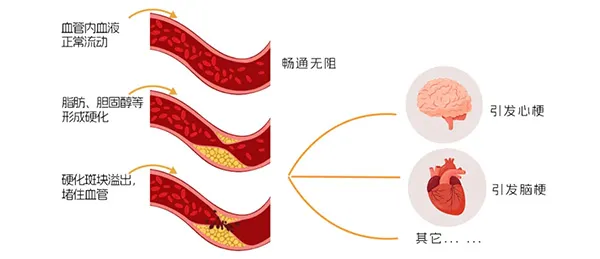
2. Scientific Records on Pu-erh Ripe Tea's Lipid-Lowering Effects
Since the successful trial production of pu-erh ripe tea in 1973, there has been over 50 years of history in fermenting pu-erh ripe tea, with nearly 30 years dedicated to researching its lipid-lowering functions.Both animal and clinical experiments have confirmed that pu-erh tea can regulate blood lipid health by lowering total cholesterol, triglycerides, and bad cholesterol (i.e., low-density lipoprotein cholesterol) while raising good cholesterol (i.e., high-density lipoprotein cholesterol) levels. The functional component known as theabrownin is identified as the primary substance underlying pu-erh tea's ability to regulate blood lipids.
1、First Clinical Experiment on Pu-erh Tea (1979 Emil Experiment):
The earliest scientific evidence regarding the health functions of pu-erh tea can be traced back to the Emil experiment in 1979, which was China's first international clinical trial on pu-erh tea. The experiment found that drinking Yunnan pu-erh ripe tea reduced body weight and lowered levels of lipid compounds, triglycerides, and cholesterol in humans while also playing a role in reducing blood uric acid levels.
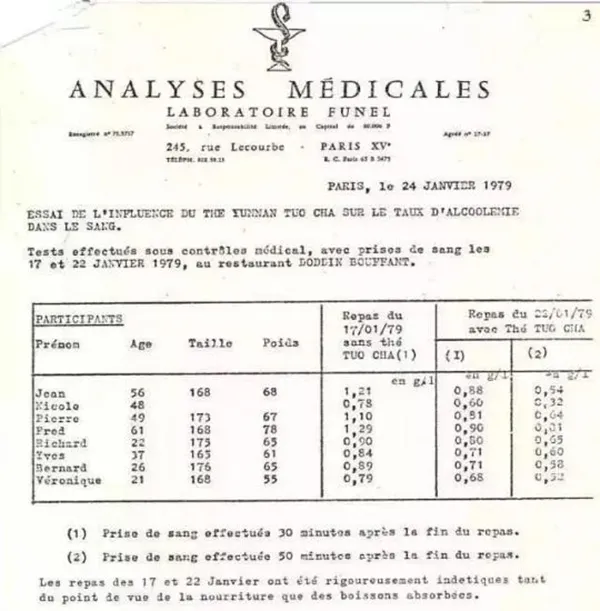
2、Animal Experiment Research Evidence:
In 2016, Wang Yuefei from Zhejiang University conducted a study titled "Safety evaluation and antihyperlipidemia effect of aqueous extracts from fermented puerh tea," using pu-erh ripe tea 7572 from 2010 as a research subject to explore its safety and lipid-lowering effects.
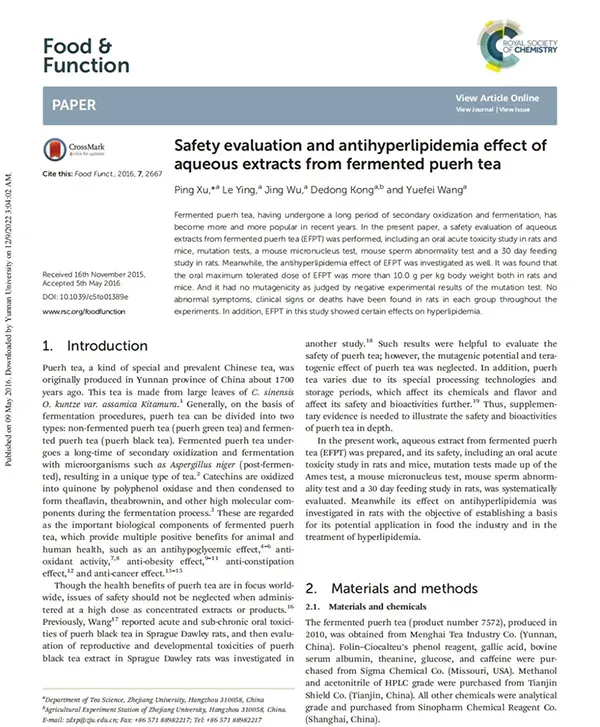
The results showed that both rats and mice had a maximum tolerated dose greater than 10.0 g/kg body weight when orally administered EFPT. No mutagenicity was observed in mouse mutation tests. Throughout the feeding experiment, no abnormal symptoms or clinical signs were noted among all groups of rats. The lipid-lowering study revealed that pu-erh ripe tea significantly reduced serum total cholesterol (TC) and triglyceride (TG) levels (p < 0.05), indicating a regulatory effect on hyperlipidemia.
3、Research by Qiu Xiangjun et al. from Henan University of Science and Technology:
In 2019, Qiu Xiangjun et al. conducted a study titled "Study on the hypoglycemic and hypolipidemic effects of Da Yi Bacteria Tea Concentrate," using animal experiments to investigate the regulation of blood lipids in high-sugar and high-fat model mice through oral administration of concentrated bacteria pu-erh tea. The results showed that serum total cholesterol (TC) and triglyceride (TG) levels were significantly reduced (P < 0.01), while high-density lipoprotein cholesterol (HDL-C) levels increased, indicating that pu-erh tea effectively regulates blood lipids with effects comparable to those of positive controls (lovastatin group).
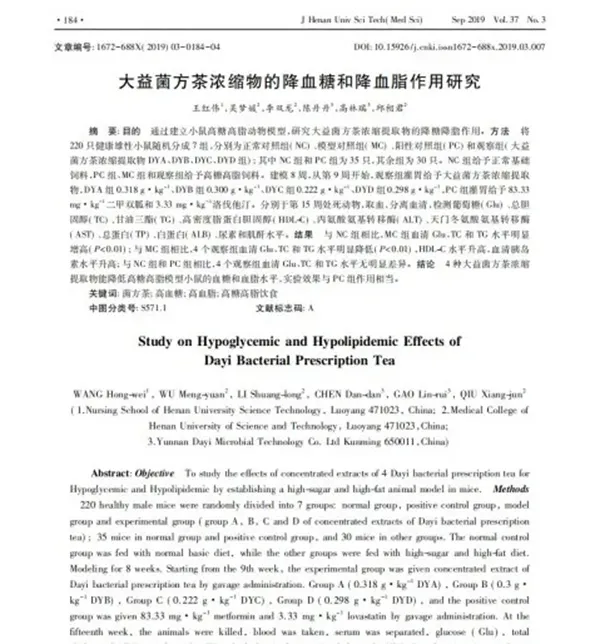
4、Research by Gong Jiashun's Team at Yunnan Agricultural University:
In 2023, Gong Jiashun's team at Yunnan Agricultural University published a study titled "Composition and Lipid-Lowering Effects of Aqueous Extracts from Pu-erh Ripe Tea and Theabrownin." They investigated the lipid-lowering effects on high-fat model rats using aqueous extracts from pu-erh ripe tea and functional component theabrownin. The findings indicated significant reductions in Lee's index (P < 0.05), serum triglycerides (TG), fasting blood glucose (FBG), liver triglycerides, and cholesterol (TC) levels (P < 0.05), along with decreased fat accumulation; serum superoxide dismutase (SOD) and glutathione peroxidase (GSH-Px) activity significantly increased (P < 0.01). Additionally, levels of nuclear factor E2-related factor 2 (Nrf2), interleukin-6 (IL-6), interleukin-1β (IL-1β), and tumor necrosis factor-alpha (TNF-α) were significantly reduced (P < 0.05), demonstrating enhanced antioxidant activity and decreased inflammatory factor concentrations.
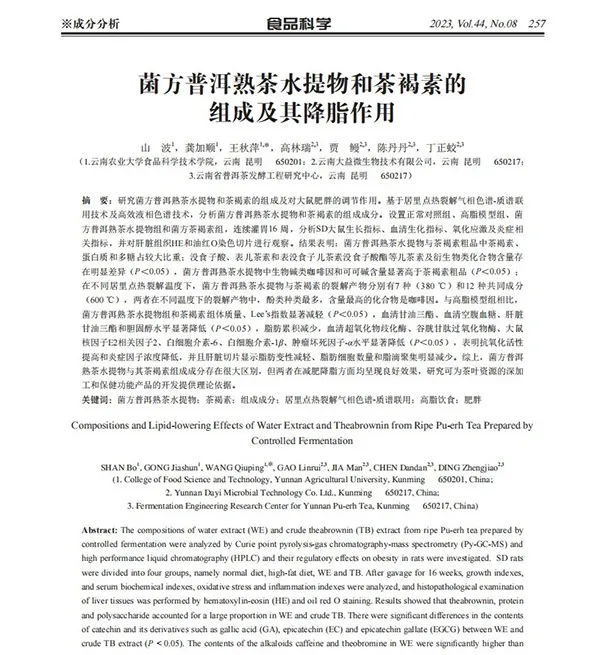
5、Clinical Experiment Research Examples:
In 2019, Jia Wei's team at Shanghai Jiao Tong University published a study titled "Theabrownin from Pu-erh Tea Attenuates Hypercholesterolemia via Modulation of Gut Microbiota and Bile Acid Metabolism." They found that adult males who consumed 3 grams of instant pu-erh tea powder daily for four weeks exhibited significant reductions in cholesterol and triglyceride levels; additionally, changes were observed in gut bacteria associated with bile salt hydrolase activity.
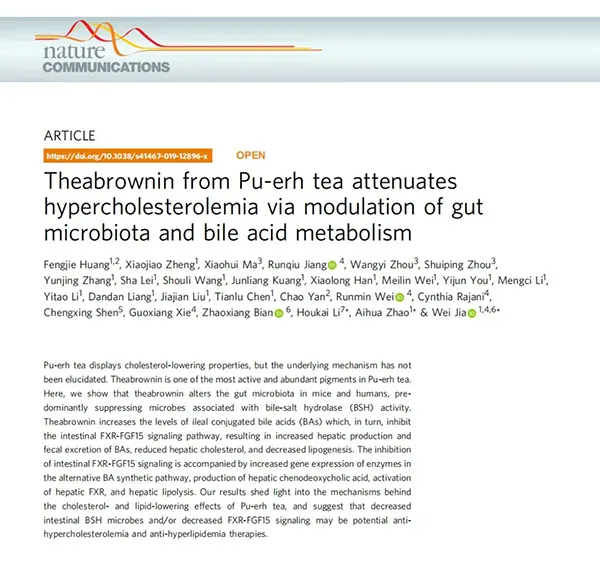
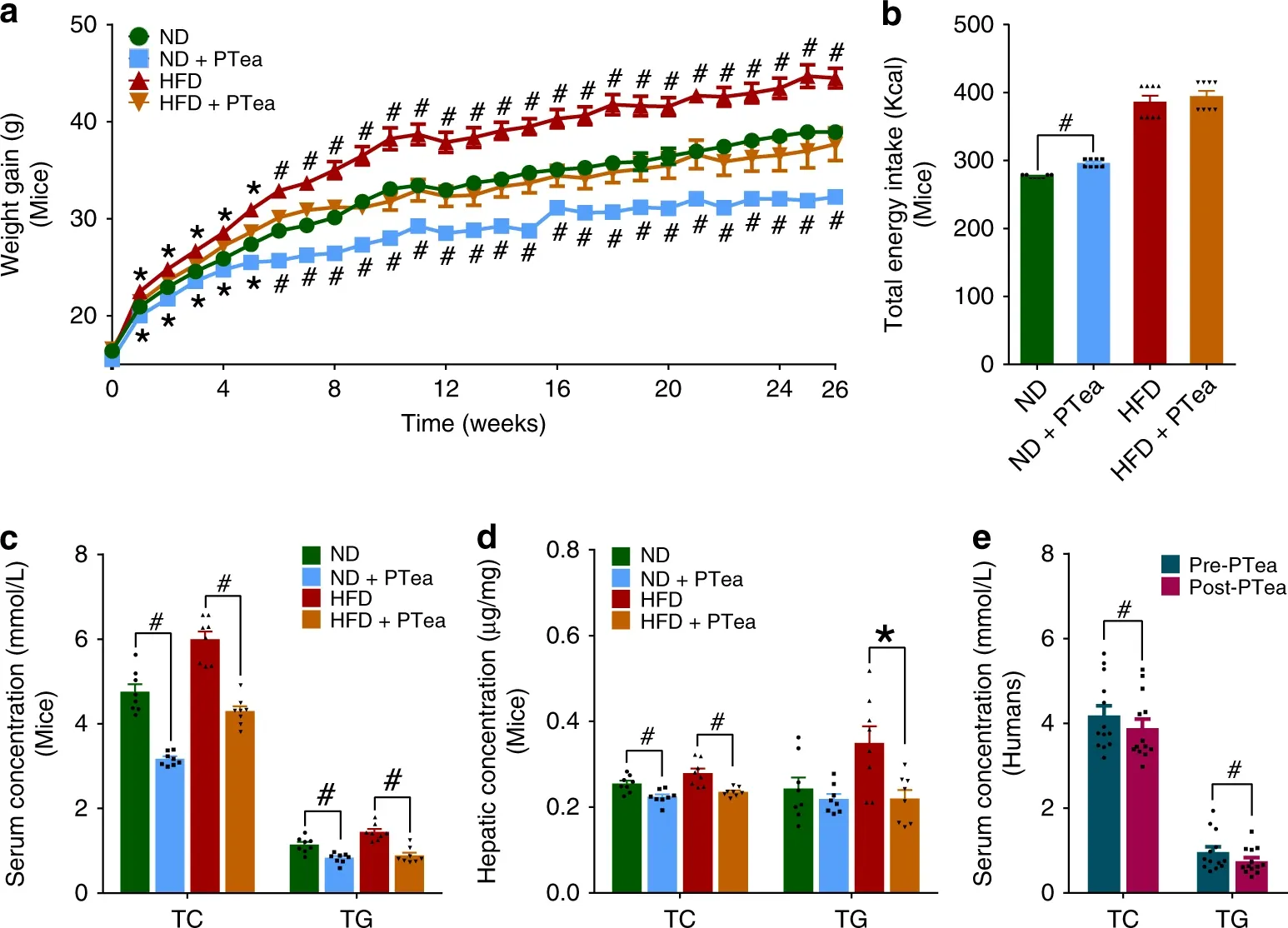
Body weight and lipid lowering effects of Pu-erh tea. a Pu-erh tea reduced the body weight of mice with either normal diet or HFD for 26 weeks. n = 8 individuals/group. Data in ND and HFD groups were compared to ND + PTea and HFD + PTea groups, respectively. b The total energy intake of normal diet or HFD fed mice after 26 weeks of tea intervention. n = 8 individuals/group. c Pu-erh tea reduced serum lipids of mice with either normal diet or HFD for 26 weeks. n = 8 individuals/group. d Pu-erh tea reduced hepatic TG and TC contents of mice with either normal diet or HFD. n = 8 individuals/group. e Pu-erh tea reduced serum lipids of human subjects after 4 weeks of consumption. n = 13 individuals/group. Data were expressed as mean ± SEM. Differences of data in mice and human subjects were assessed by the Mann–Whitney U test and Wilcoxon rank-sum test, respectively, *p < 0.05, #p < 0.005
3. Functional Components for Lipid-Lowering in Pu-erh Ripe Tea
Theabrownin is an important functional component in pu-erh ripe tea that contributes significantly to its color formation and efficacy (antioxidant properties, weight management, anti-tumor effects). However, there is still considerable debate regarding its definition; it is a macromolecular polymer formed primarily from catechins through oxidative polymerization.Chemical analysis indicates that basic components within crude theabrownin comprise approximately 55.38% theabrownin; total polyphenols at 14.98%, total flavonoids at 14.22%, amino acids at 2.53%, total sugars at 28.00%, polysaccharides at 23.44%, proteins at 24.42%, and total catechins at 4.93%. Together, these elements form the material basis for the lipid-lowering effects attributed to theabrownin.Through this understanding, we can see that drinking pu-erh ripe tea positively influences blood lipid regulation; thus, we can incorporate more pu-erh ripe tea into our daily lives to cultivate healthier lifestyles.
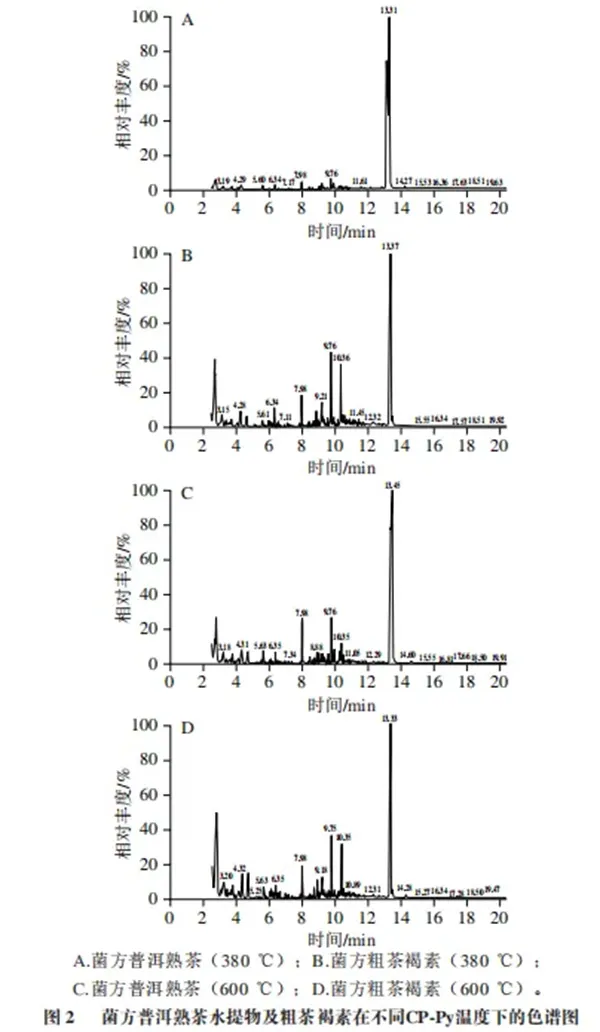
4. Summary of Pu-erh Tea's Effects on Lowering Blood Lipids
- Lowering Cholesterol: Pu-erh tea effectively reduces total cholesterol and low-density lipoprotein cholesterol (LDL-C), known as "bad cholesterol." High LDL-C levels are significant risk factors for cardiovascular diseases; active components within pu-erh tea help reduce this type of cholesterol production.
- Increasing Good Cholesterol: In addition to lowering bad cholesterol, pu-erh tea raises high-density lipoprotein cholesterol (HDL-C), known as "good cholesterol," which aids in clearing excess cholesterol from blood vessels.
- Regulating Triglycerides: Studies indicate that drinking pu-erh tea can lower triglyceride levels; managing these levels is crucial for maintaining heart health.
- Scientific Research Support: Numerous animal experiments and clinical trials have confirmed pu-erh tea's lipid-lowering effects.
- Drinking Recommendations: For optimal results, it is advisable to drink pu-erh tea moderately daily—typically one to two cups—while maintaining a healthy diet and regular exercise for better lipid regulation.
In conclusion, research indicates that pu-erh tea possesses excellent lipid-lowering properties making it a recommended health beverage; however, individuals with specific health conditions should consult medical professionals before consumption. This article aims to enhance your understanding of pu-erh tea's health benefits while encouraging its reasonable use in daily life.
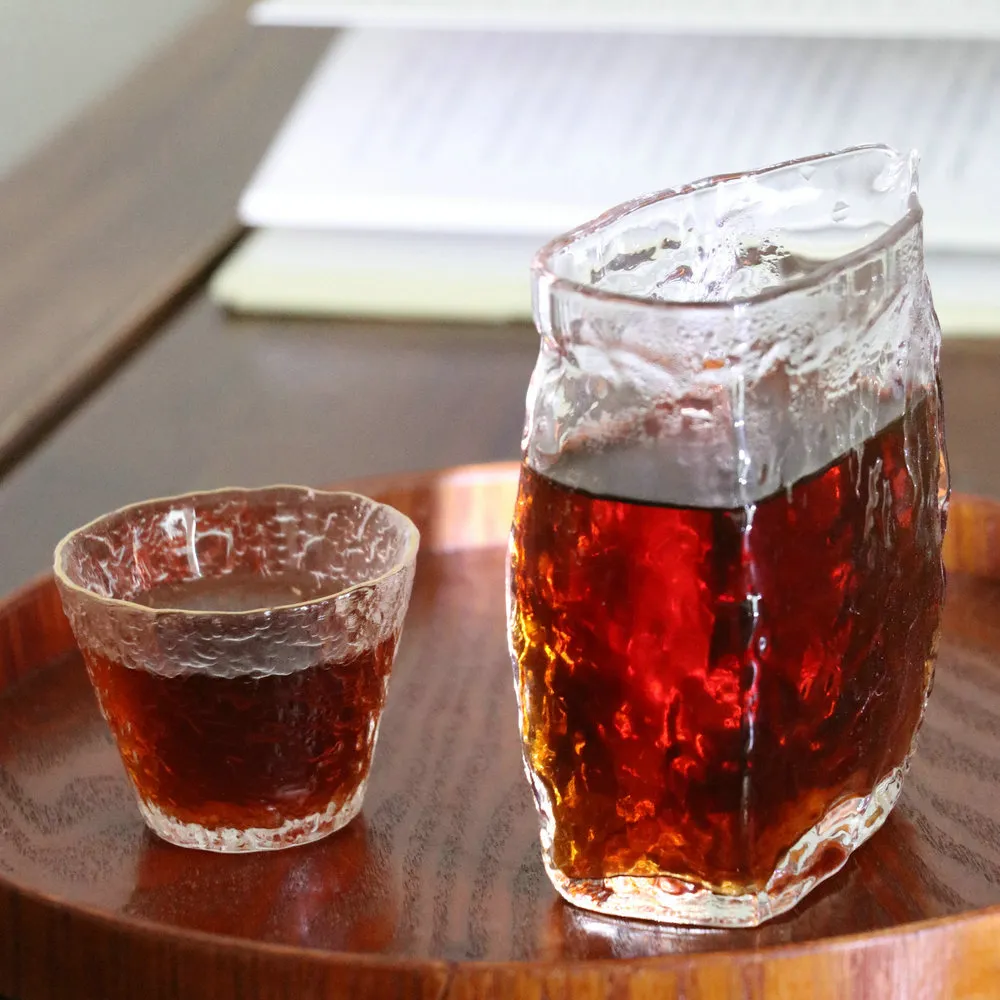
參考文獻:
[1]成人高血脂症食養指引(2023 年版).
[2] Xu P , Ying L , Wu J ,et al.Safety evaluation and antihyperlipidemia effect of aqueous extracts from fermented puerh tea[J].Food & Function, 2016, 7.
[3]王紅偉,吳夢媛,李雙龍,等.大益菌方茶濃縮物的降血糖和降血脂作用研究[J].河南科技大學學報:醫學版, 2019, 37(3):4.
[4]山波.菌方普洱熟茶水萃取物和茶褐素的組成及其降脂作用[J].食品科學, 2023, 44(8):11.
[5]Angiogenesis and Traditional Chinese Medicine Laboratory, Department of Pharmacology, University of Cambridge, Cambridge, CB2 1PD, United Kingdom . Pu-erh tea: A review of a healthful brew 香港浸會大學 Wei Jia*, Cynthia Rajani, Aiping Lv, Tai Ping Fan, Xiaojiao Zheng